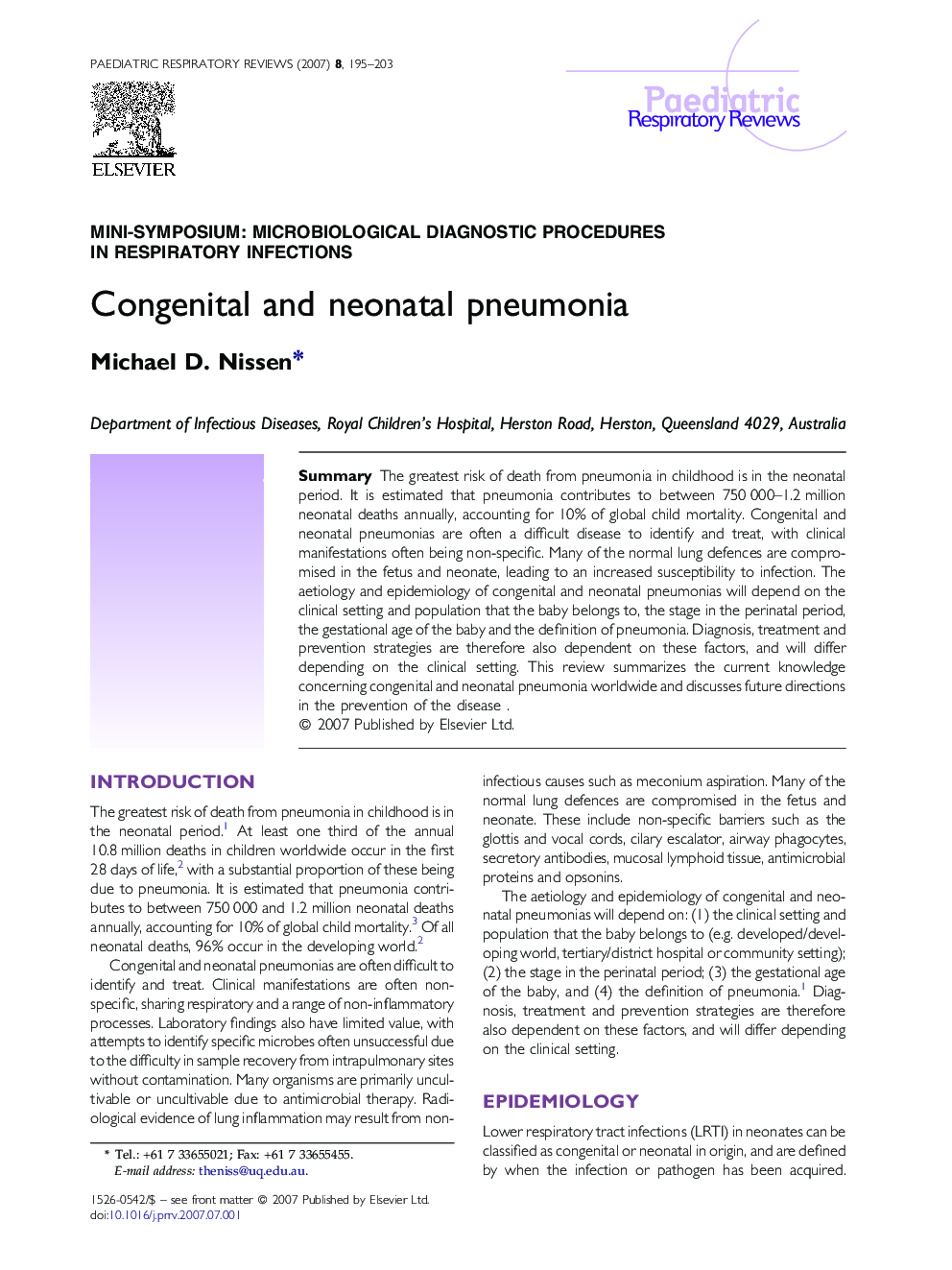| Article ID | Journal | Published Year | Pages | File Type |
|---|---|---|---|---|
| 4171744 | Paediatric Respiratory Reviews | 2007 | 9 Pages |
SummaryThe greatest risk of death from pneumonia in childhood is in the neonatal period. It is estimated that pneumonia contributes to between 750 000–1.2 million neonatal deaths annually, accounting for 10% of global child mortality. Congenital and neonatal pneumonias are often a difficult disease to identify and treat, with clinical manifestations often being non-specific. Many of the normal lung defences are compromised in the fetus and neonate, leading to an increased susceptibility to infection. The aetiology and epidemiology of congenital and neonatal pneumonias will depend on the clinical setting and population that the baby belongs to, the stage in the perinatal period, the gestational age of the baby and the definition of pneumonia. Diagnosis, treatment and prevention strategies are therefore also dependent on these factors, and will differ depending on the clinical setting. This review summarizes the current knowledge concerning congenital and neonatal pneumonia worldwide and discusses future directions in the prevention of the disease .
